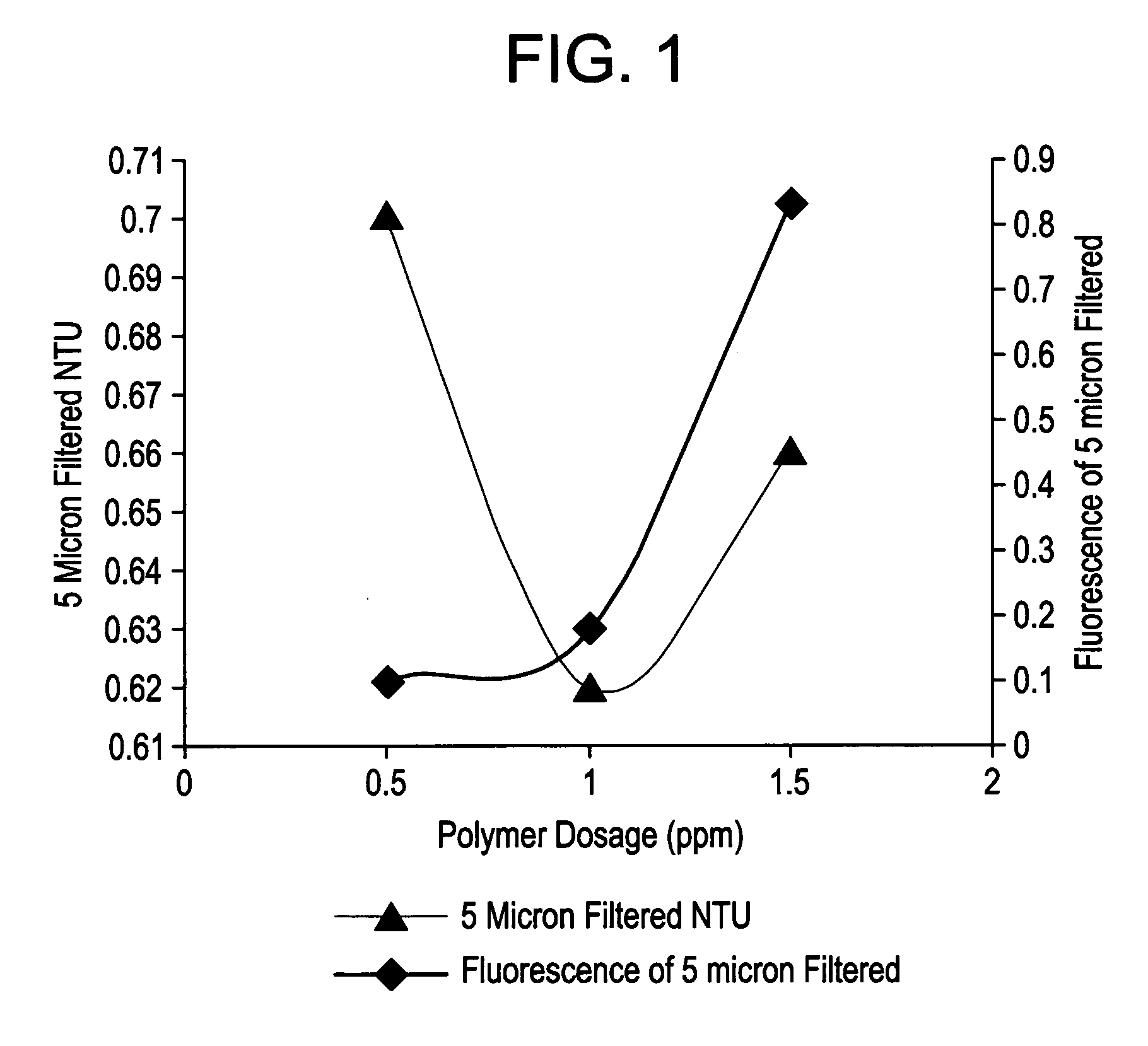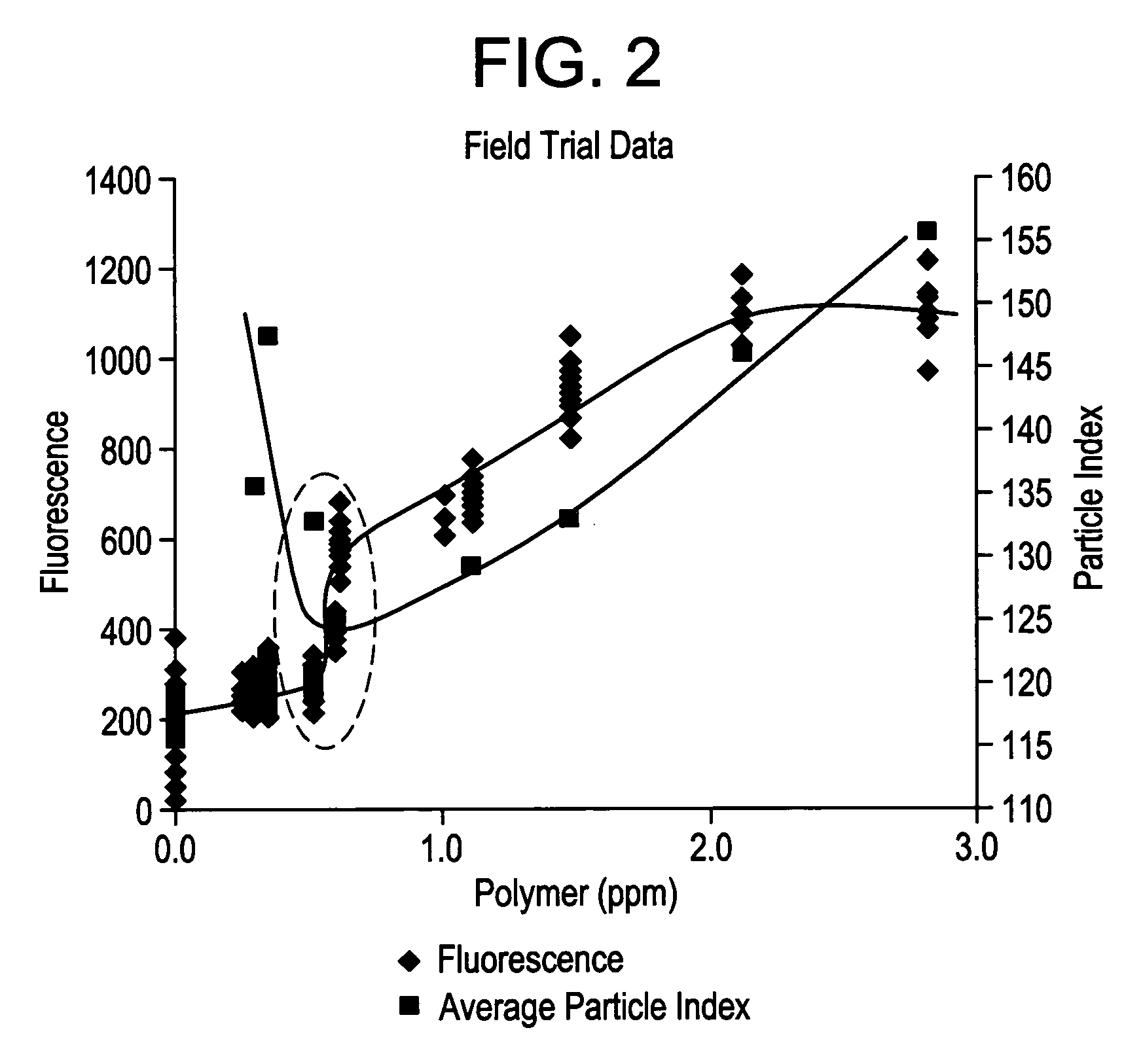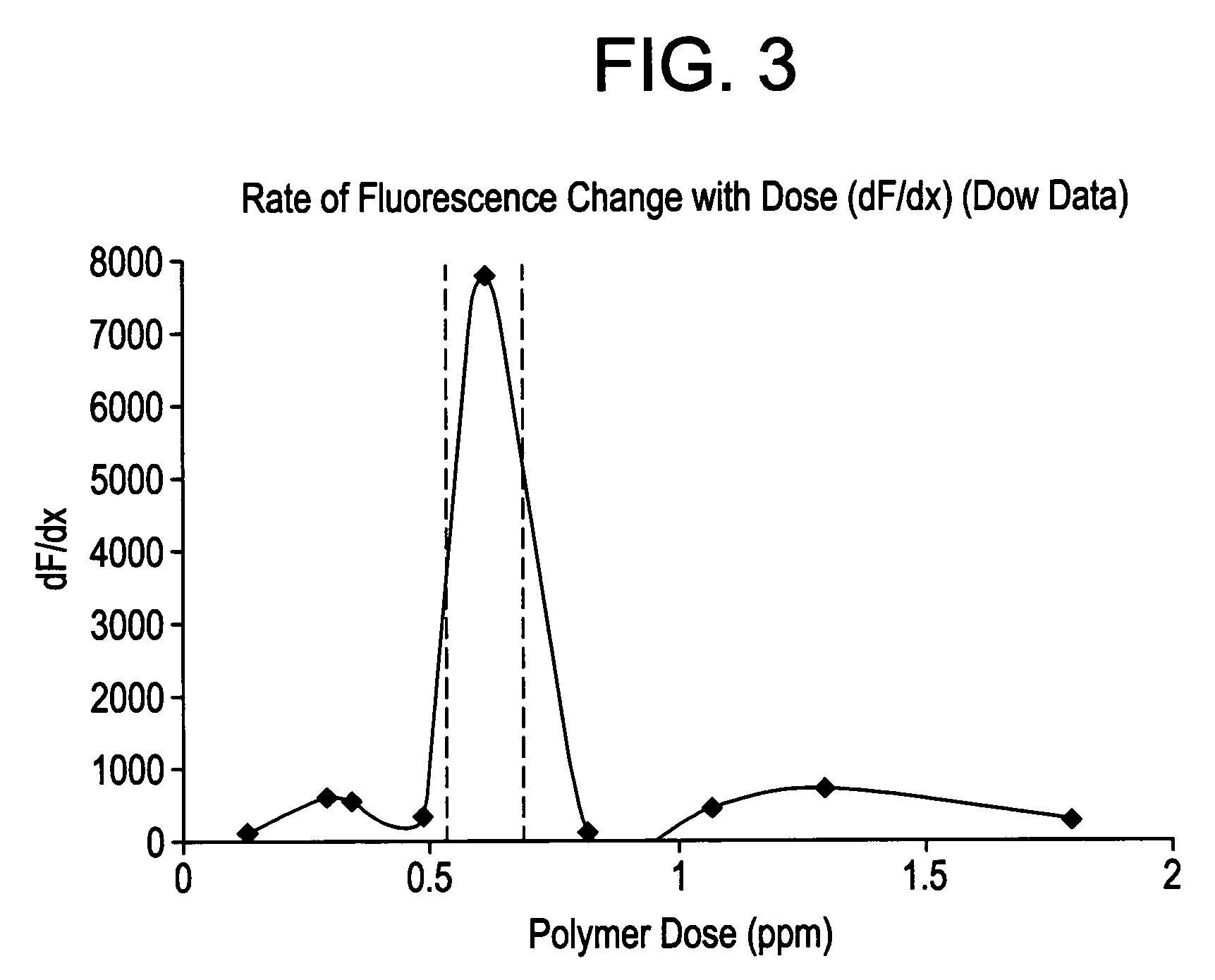Method of monitoring treating agent residuals and controlling treating agent dosage in water treatment processes
- Summary
- Abstract
- Description
- Claims
- Application Information
AI Technical Summary
Benefits of technology
Problems solved by technology
Method used
Image
Examples
example 1
[0087] As discussed above, the optimal treating agent dosage is calculated using the inverse derivative of fluorescence response with respect to treating agent dose and correlating to a water quality parameter, in this case turbidity, using standard jar test methods to measure fluorescence and turbidity.
[0088] For purposes of this example, jar tests are accomplished using a four-unit jar tester from A&F Machine Products Co., Berea, Ohio (model number “JAR MIXER”) according to the following protocol. [0089] 1) Place a 250-1,000 mL test sample in a sample jar and initiate stirring at 200 rpm. [0090] 2) Add treating agent via syringe into the vortex of the stirred sample and continue stirring for 30 seconds. [0091] 3) Slow the stirring to 15 to 60 rpm and continue stirring for 5 minutes. [0092] 4) Stop stirring, remove the paddles from the sample and allow the sample to settle for 5 minutes. [0093] 5) Remove a sample of the supernatant via pipette or syringe from a level about 1 cm be...
example 2
[0099] Testing is also accomplished in the field according to the method of Example 1 using the Hach 2100P turbidimeter on Mississippi River water that has been previously treated for turbidity removal resulting in a turbidity of about 1 NTU. Fluorescence data is obtained using a TRASAR 8000 Fluorometer from Nalco Company, Naperville, Ill. The TRASAR 8000 requires a correction at zero added fluorescein with the correction being a subtraction of 0.06 ppb fluorescein. This correction is attributed to less precise optics versus the research grade Hitachi. PolyDADMAC is the treating agent. The fast mix is 30 seconds, slow mix three minutes and settling time five minutes. The Fluorescence Intensity, ppb is without the 0.06 ppb fluorescein background correction, while the Corrected Quenching is the inverse of the corrected Fluorescence Intensity, so it has units of ppb−1. The results are shown in Table 2
TABLE 25 umFilteredFluorescenceCorrectedppm1 / ppmNTUIntensity, ppbQuenching0.42.50000....
example 3
[0101] Natural surface water from a lake in Montana, USA, is treated with a dual filter aid program using ferric sulfate solution and polyDADMAC, as summarized in Table 3. The fast mix is two minutes, slow mix ten minutes and no settling time and the 0.057 ppb fluorescein correction is subtracted from the measured fluorescence intensity. The results are summarized in Table 3.
TABLE 35 umFilteredFluorescenceCorrectedppm1 / ppmNTUIntensity, ppbQuenching0.502.00001.050.4082.84901.001.00000.740.6151.79211.500.66670.640.7921.36052.000.50000.521.2600.8313
[0102] Note that in Table 3, 0.057 ppb is subtracted to correct the fluorescence.
[0103] As shown in Table 4, non-weighted regression analysis of Stern-Volmer plots for the above data have ‘goodness-of-fit’ (r2) of approximately 90% for the field data and 99% for the laboratory data. Data using the Hitachi research grade Fluorometer presumably has a higher fit due to more accurate fluorescence measurements with significantly lower backgrou...
PUM
 Login to View More
Login to View More Abstract
Description
Claims
Application Information
 Login to View More
Login to View More - R&D
- Intellectual Property
- Life Sciences
- Materials
- Tech Scout
- Unparalleled Data Quality
- Higher Quality Content
- 60% Fewer Hallucinations
Browse by: Latest US Patents, China's latest patents, Technical Efficacy Thesaurus, Application Domain, Technology Topic, Popular Technical Reports.
© 2025 PatSnap. All rights reserved.Legal|Privacy policy|Modern Slavery Act Transparency Statement|Sitemap|About US| Contact US: help@patsnap.com



